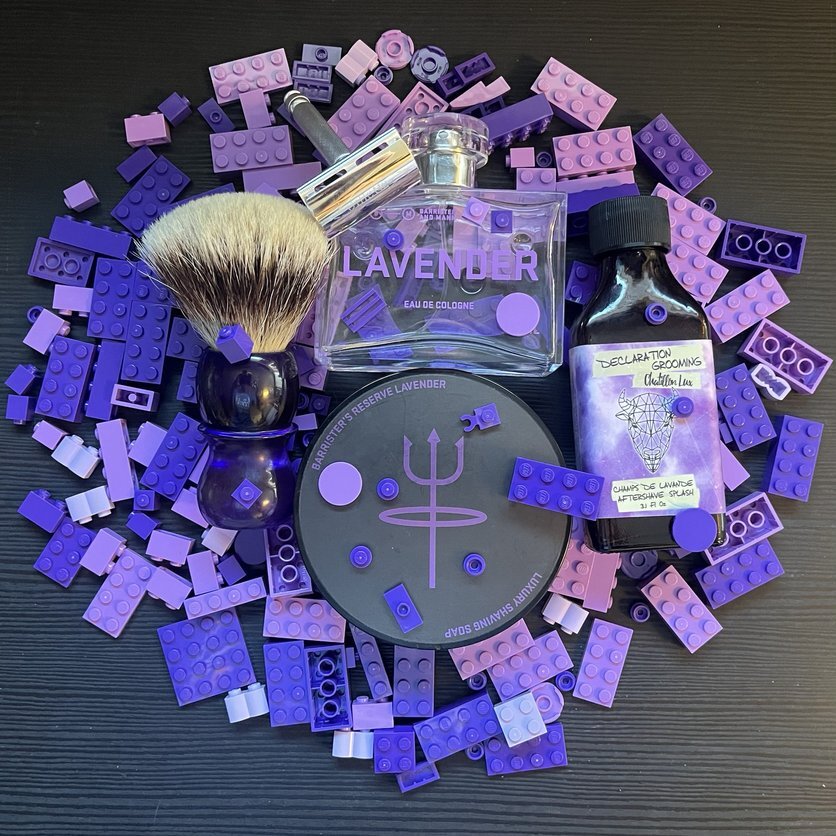So, there is some contradictory information about Friodur razors floating around the interwebs. For instance, according to the text of German Wikipedia (English Wikipedia, the ice-hardening process for hardening stainless steel was invented in 1939 and patented in 1951, but according to the time table in the same article, it was patented in 1939 but the name Friodur was only introduced with the first ice-hardened blades in 1951.
But then I saw a mysterious 7/8 Friodur 50 on eBay with a patent stamp D. R. PAT 41-DL4678.
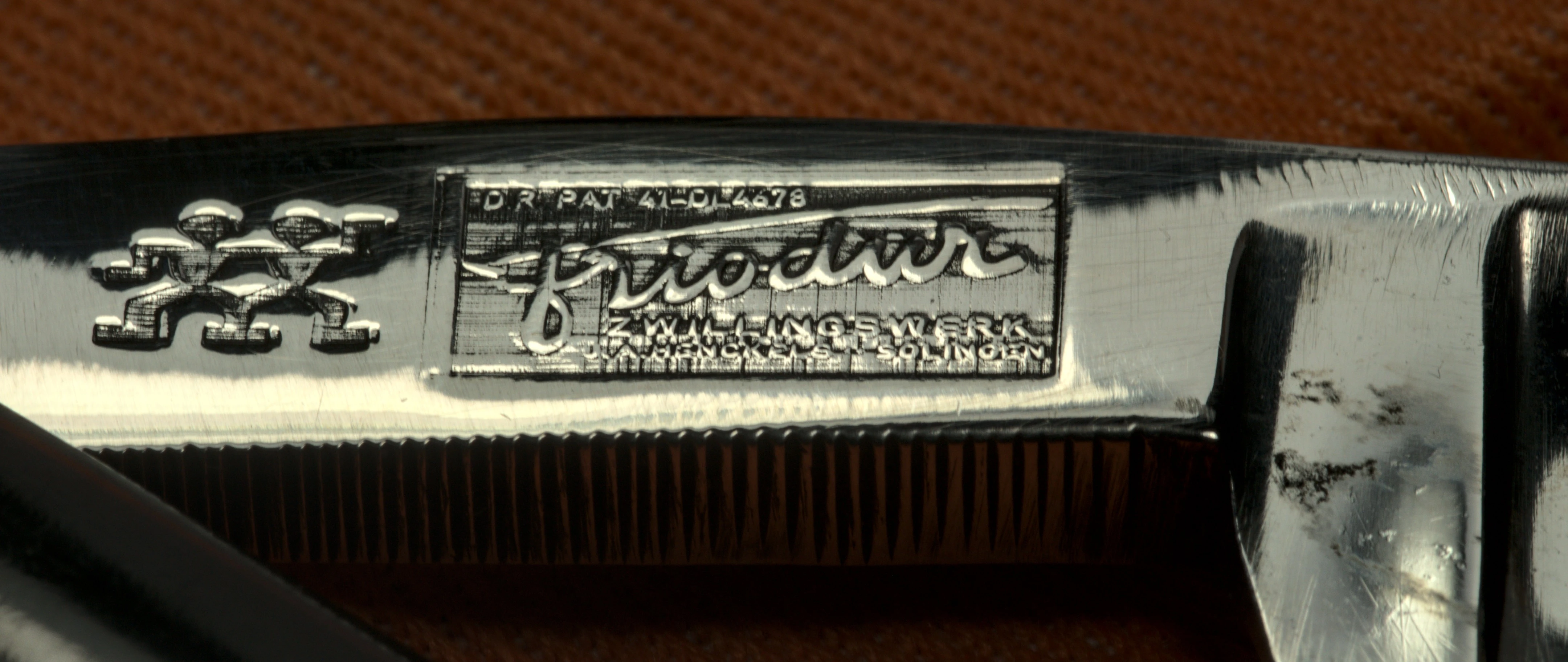
Now I can’t find that patent document, but it seems to be a patent stamp from the patent office of the German Reich (presumably of the third kind given that the Friodur name appeared in at the earliest 1939 and the Reich Patent Office was dissolved after the allied victory). So it seems that this is a 1941 Friodur model.
It’s also the only Friodur I’ve ever seen to have etchings on both sides of the blade. Here’s the usually blank back side with a big sweeping Friodur logo:
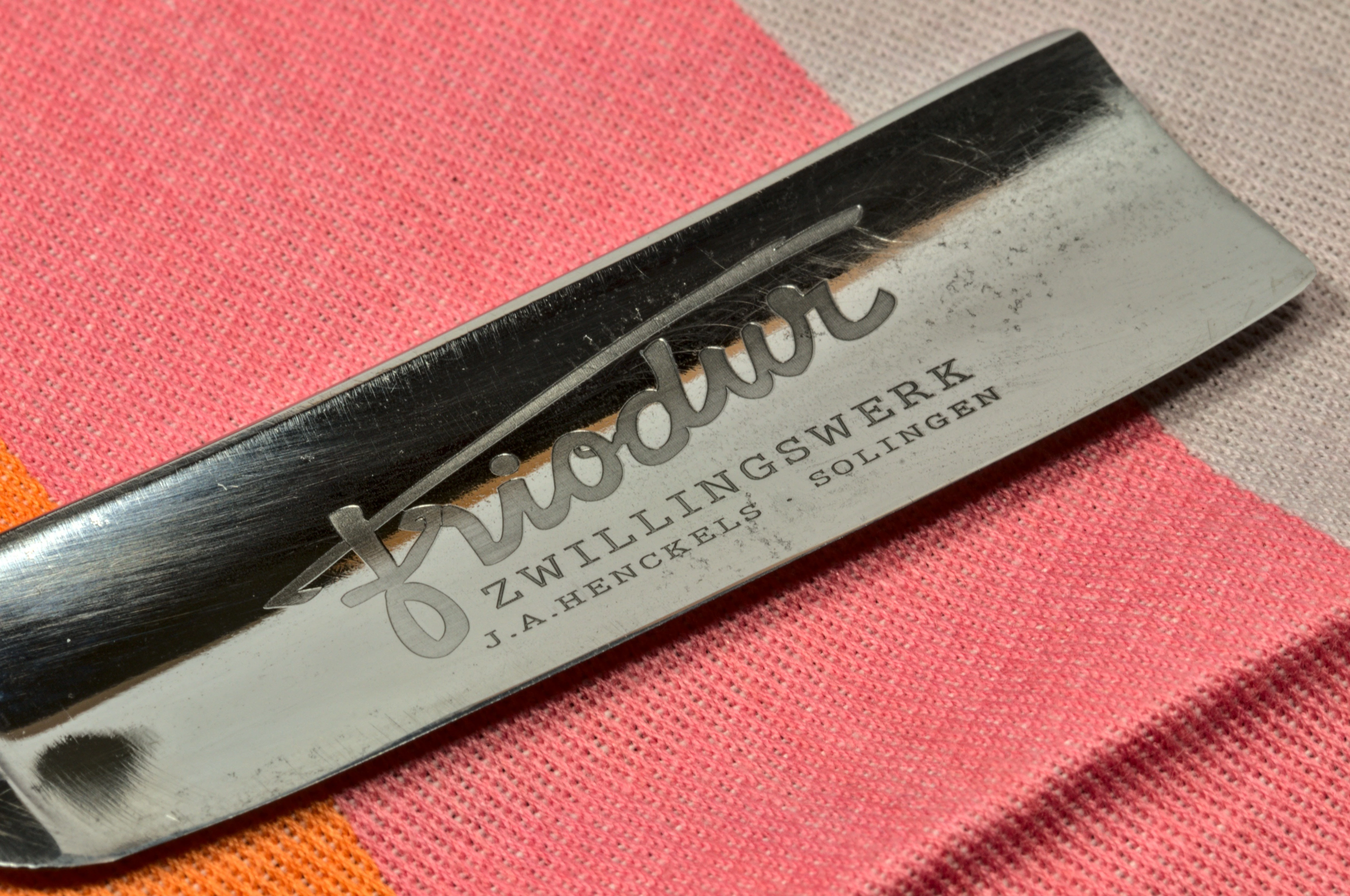
It seems like the early Friodurs made a really big deal of being Friodurs. Must have been expensive razors.
The front side has the typical shank markings of earlier carbon steel Henckels straights (Later Friodurs have the swirly Friodur logo in addition to the Zwilling (twin) logo):
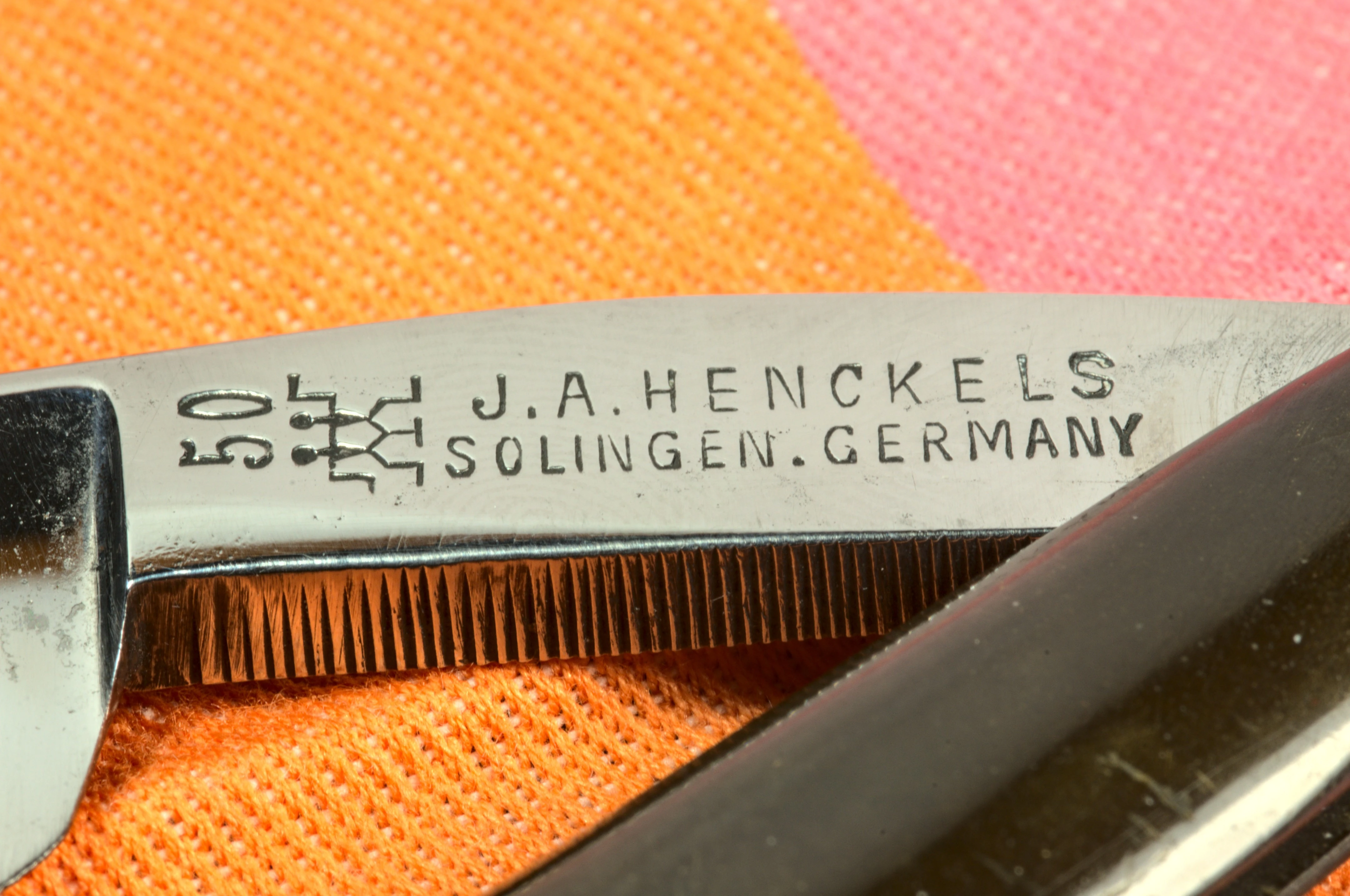
But the really interesting part is the decoration etched into the front face of the blade. First, there’s what looks like the double-headed eagle of the Scottish rite of Freemasonry.
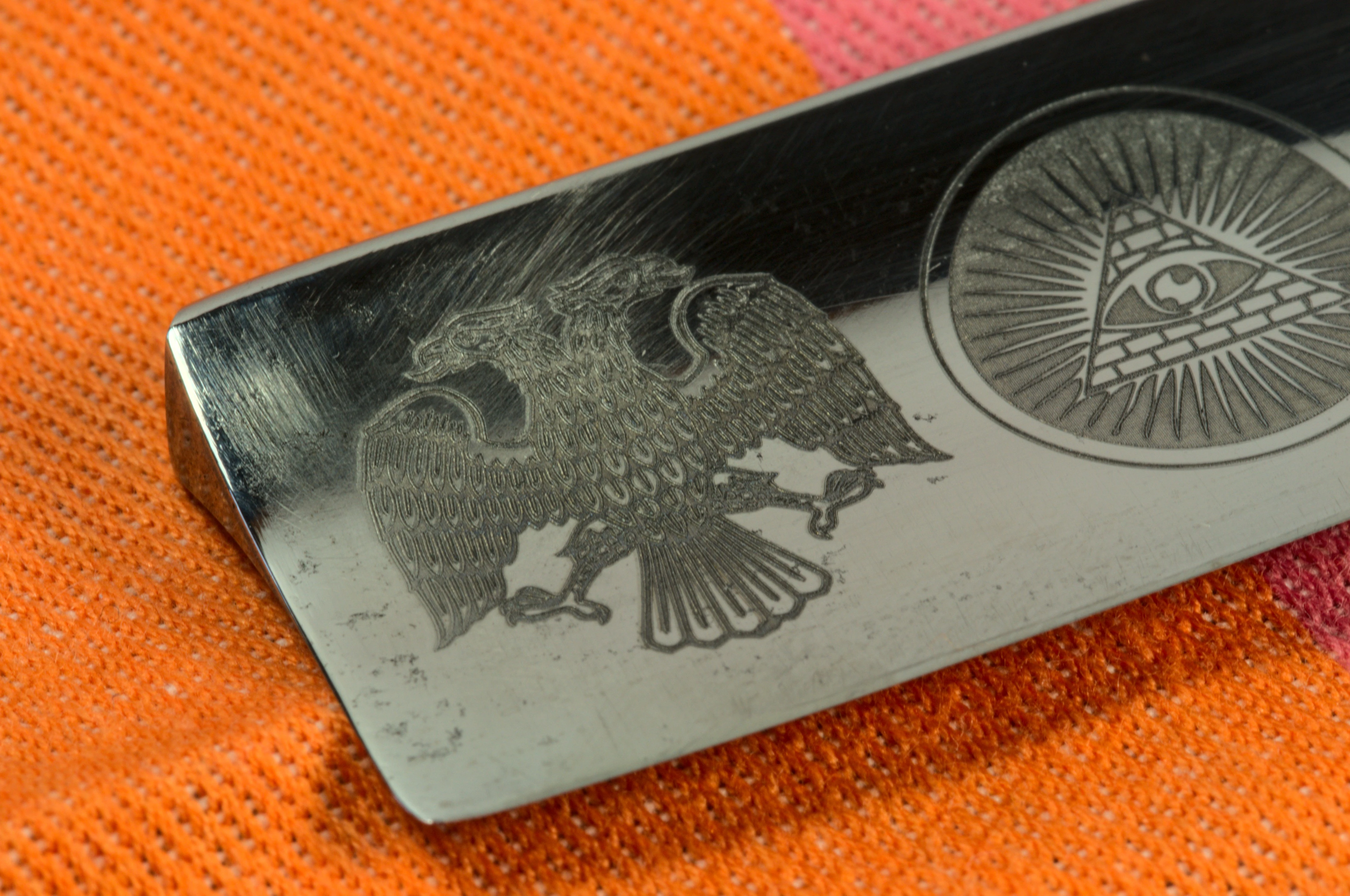
A big Eye of Providence:
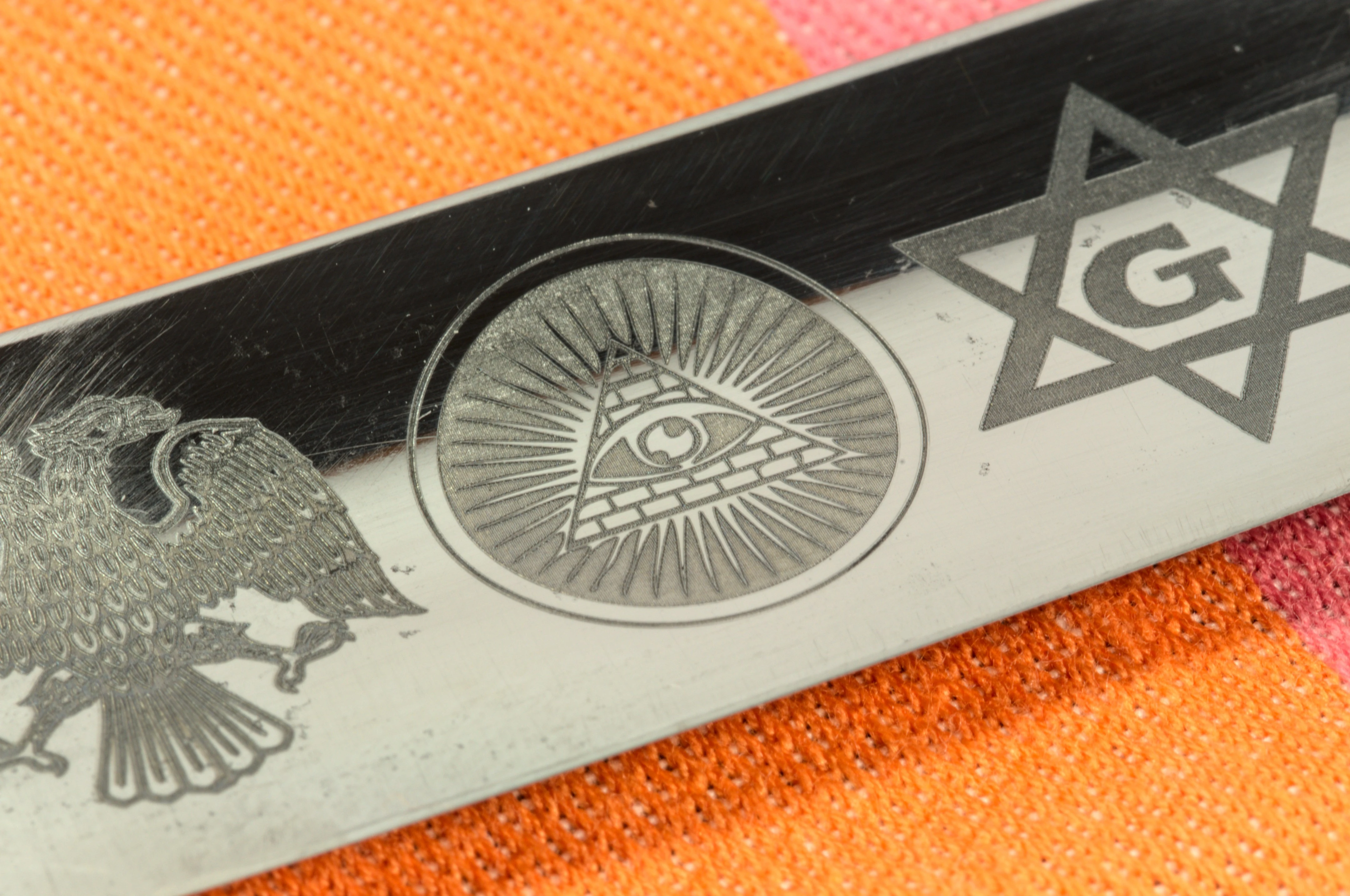
A Freemason’s Star (apparently not really a star of David, but a geometric regularization of the square-and-compass symbol of the Freemasons
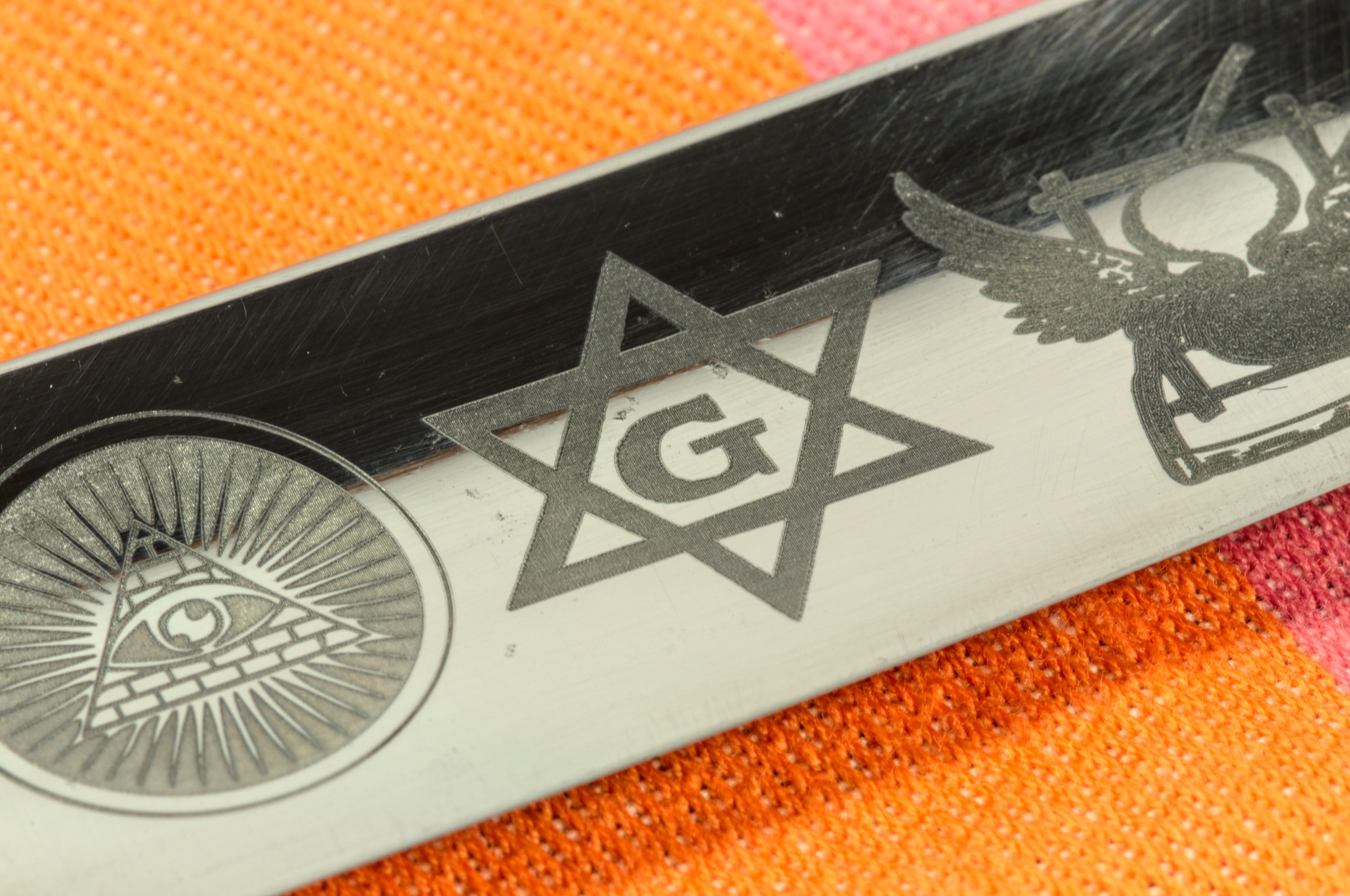
And finally this image I couldn’t find information on that doesn’t make me want to put on a tinfoil hat. Supposedly a scythe and a winged hourglass symbolising time as the destroyer of humankind’s institutions. I will not link to my fishy sources.
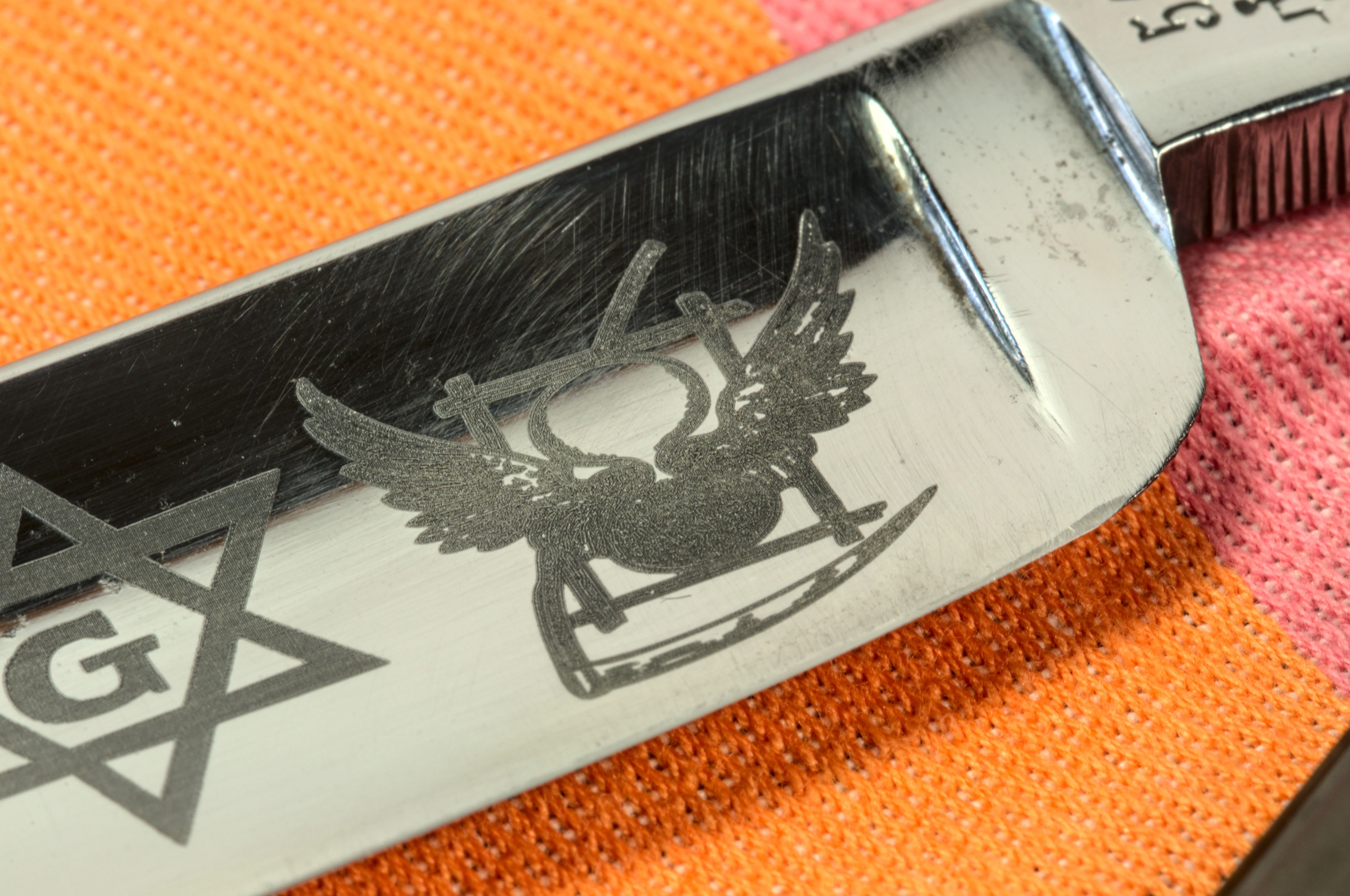
Here’s the whole thing! I’m not sure yet whether I think it’s pretty, but it’s sure interesting!
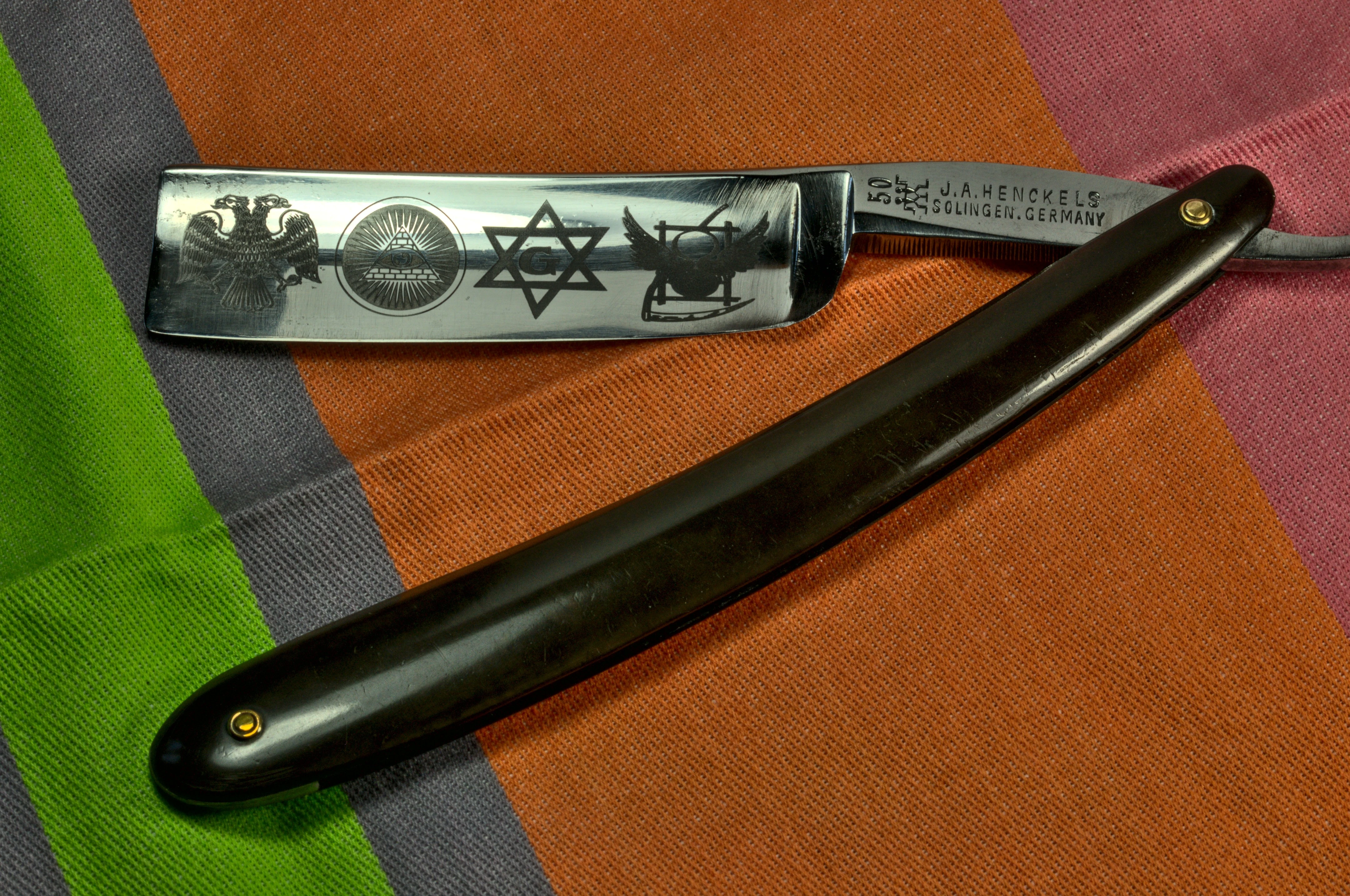
I’m going to hone this puppy to get it ready for Austere August, $FriodomRiders, and $Honemeisterschaft
Nice one! But if it were mine, just for extra safety, I would have a pentagram engraved on the scales.
That is a smart precaution. I’m calling my engraver first thing on Monday morning
And I would recommend to rinse it in holy water. Just in case.
I’m pretty sure that would damage the pentagram 😈
🤣🤣🤣
Coooooool. Thanks for sharing.
So, I’d guess that the show side was done by Henckels and the back side was etched by someone else. Stainless was invented in the very early 20th century (1913). My father (1912) told me what a big deal it was when stainless became available in items used by the general public. I think this was late '20s, early '30s. A Friodur razor made in that era would, in fact, be a very big deal. Very cool razor!!! I’ll be riding to Friodom with my trusty 14. I still have no clue what soap I’ll use.
etched by someone else
Certainly a possibility, and I can’t find any sources supporting or contradicting this. It looks certainly like an odd choice of symbols for Henckels. One thing sticks out to me, though: the Friodur logo is on what is typically the back side. All decorated blades I know (contemporary examples include Puma, Rolli, Böker, Filarmónica, earlier examples are Wade & Butcher, Frederick Reynolds, etc) are etched/inlaid on the other side, including later decorated Friodur blades.
So I think it likely that the Friodur logo wasn’t meant to be the main decoration. This wouldn’t necessarily mean that the masonic symbols were, though. I’m wondering whether this was a blade meant to be personalised.
My father (1912) told me what a big deal it was when stainless became available in items used by the general public.
Oh, I can imagine! I think it took a while before it became a true replacement for carbon steel, though. Stainless steel welding was a problem for a long time, and early stainless blades wouldn’t hold an edge until cryogenic hardening (Friodur) was discovered.
I still have no clue what soap I’ll use.
Same! I am incapable of making a decision right now 😅
Probably a group of Masonic wetshavers got together and commissioned Henckels to make them a razor that was personalized for the group!
Sounds plausible
That’s a serious looking razor.
Maybe that’s the origin story of Mr Why So Serious?
A very interesting find! Judging by the looks of the etchings, I also think it’s very likely that someone did the freemason symbols for themselves. Also, if this razor was indeed produced during the reign of the 3rd Reich, I highly doubt that you could freely buy a straight razor with freemason symbols - freemasonry was totally frowned upon in Nazi Germany, since their beliefs of everyone being equal are in stark contrast to the fascist NS ideology.
According to a freemasonry website that discussed various symbols, the winged hourglass with the scythe is somewhat of a “memento mori” symbol for freemasons. No matter where you stand in society you can’t reverse the sand in the hourglass, so you better make good use of your time. To quote the website: > "Masons are taught that since we don’t know the exact time of death, it is essential to utilize the time God has given to mold ourselves into better people.
(Source: MasonicFind)And yeah, some people have tons of misconceptions around the freemasons, thanks to Dan Brown and other popular authors. Yes they are a “secret” society, but nothing to do with the occult or even satanism, as sometimes portrayed in movies. In fact, they are very much rooted in christian beliefs. They aren’t the Illuminati, or any occult magic society. (I guess that DJ knows all of this, but if someone here isn’t familiar with the whole thing it might be interesting. Thanks for listening to my TED talk 😉 )

